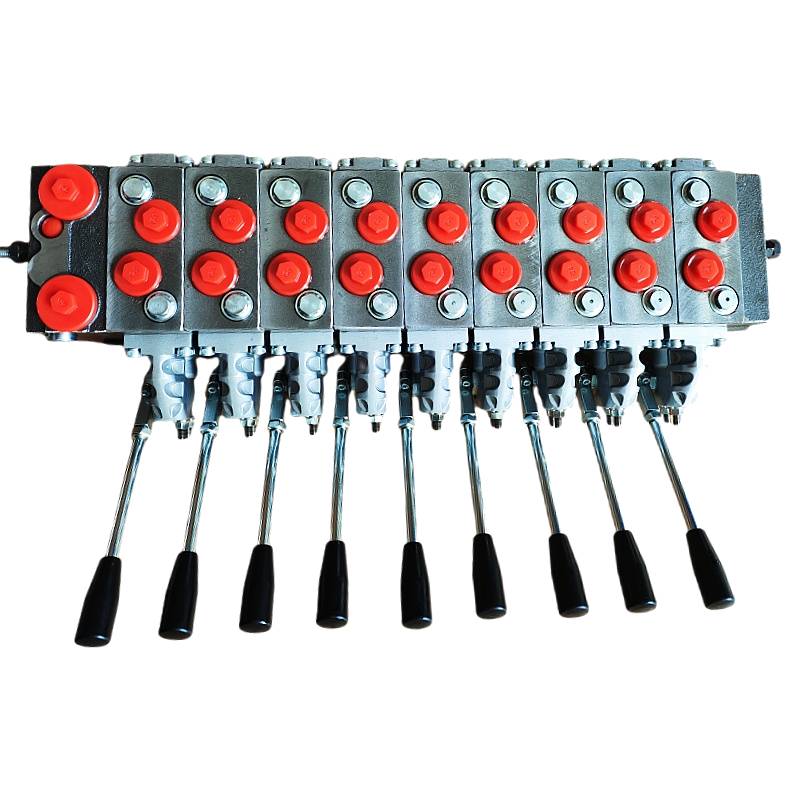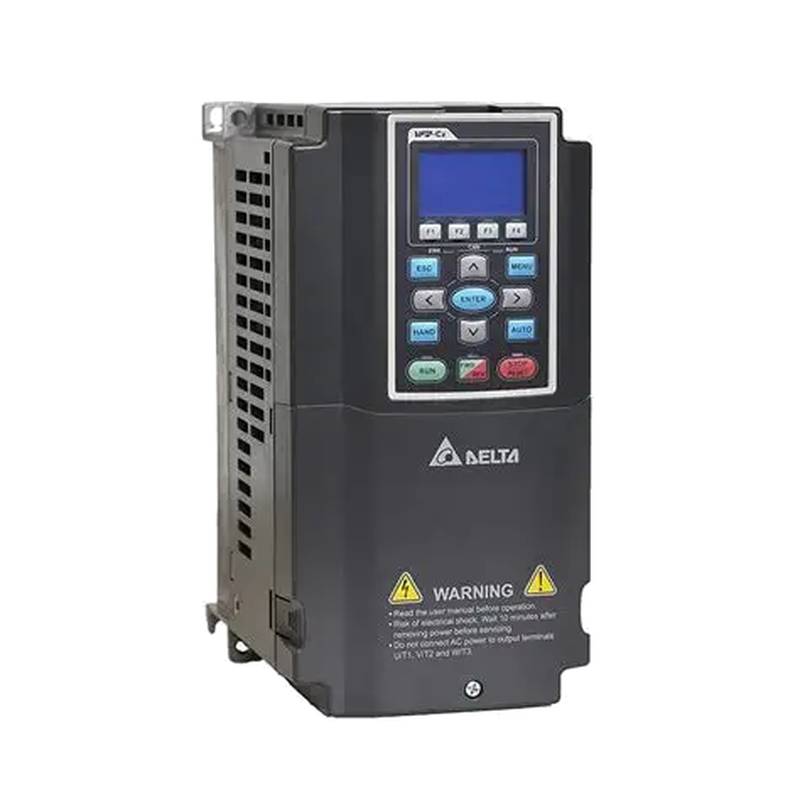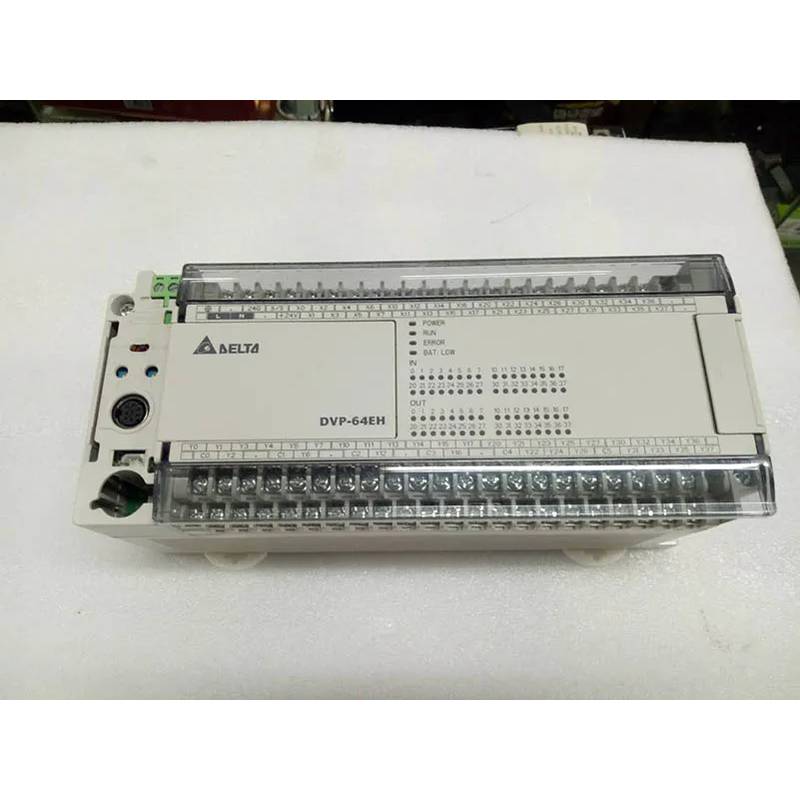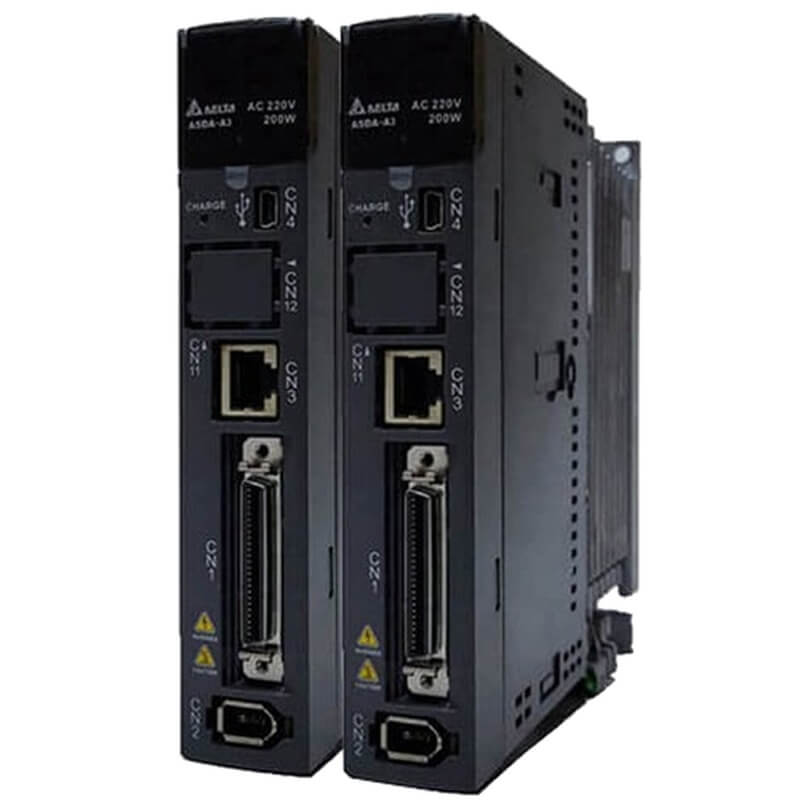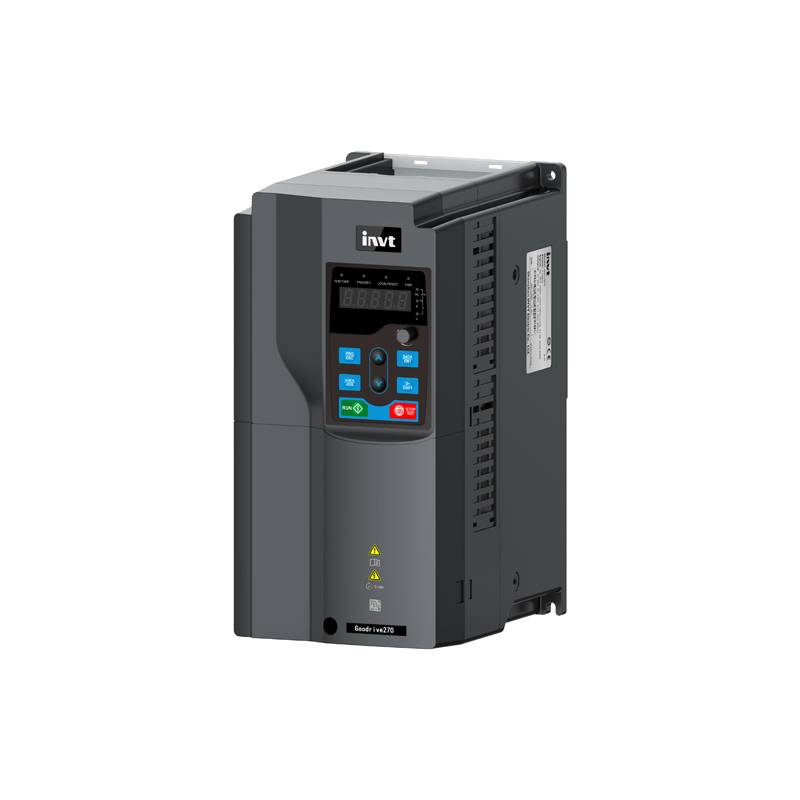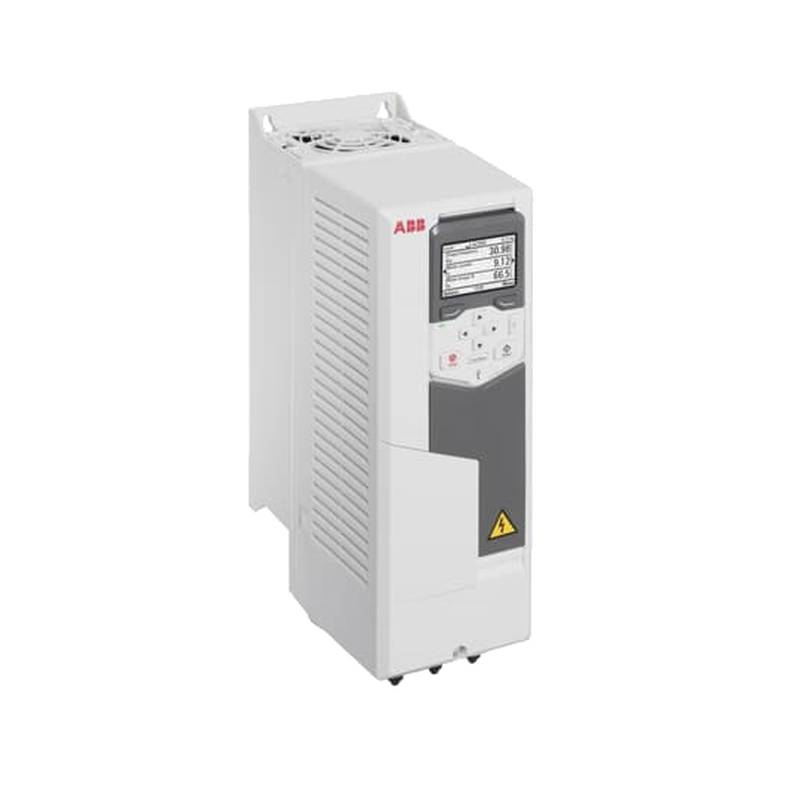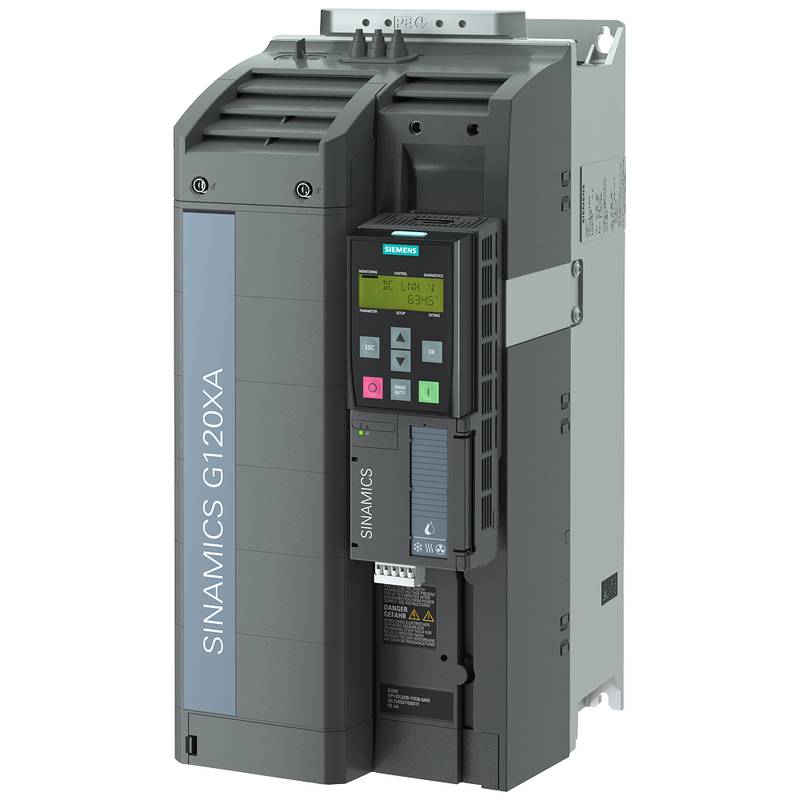
The YOULI YL-PV4/5S Controlled Hydraulic Proportional Valve offers precise, electrically modulated control over hydraulic systems, representing a significant advancement over traditional directional valves. This valve enables sophisticated command over flow and pressure, translating electrical input signals into smoothly adjustable spool displacement for fine-tuned actuator speed and force regulation. Engineered for applications where standard valves lack precision but servo valves would be over-engineered, the YL-PV4/5S strikes an optimal balance between performance, cost, and robustness. Its modular design and load-sensing capabilities contribute to enhanced system efficiency, safety, and longevity, making it a versatile component for both mobile and industrial hydraulic applications.
Product Specifications
The YOULI YL-PV4/5S Controlled Hydraulic Proportional Valve is built to demanding industrial standards, with key specifications including:
| Parameter | Value |
| :------------------------ | :----------------------------------------------- |
| Maximum Pressure (P, A/B) | 350 bar (5075 psi) |
| Maximum Pressure (T) | 40 bar (580 psi) |
| Oil Temperature Range | -20 °C to 90 °C (-4 °F to 194 °F) |
| Oil Viscosity Range | 15-75 mm²/s (15-75 cSt) |
| Minimum Oil Viscosity | 12 mm²/s (12 cSt) |
| Maximum Oil Viscosity | 400 mm²/s (400 cSt) |
| Ambient Temperature Range | -30 °C to 60 °C (-22 °F to 140 °F) |
| Filtration | 10 µm |
| Max. Internal Leakage | 18 cm³/min (at 100 bar, 50°C) |
| Max. Contamination | 23 / 19 / 16 (ISO 4406) |
All specifications are subject to change without notice.
Core Features & Market Positioning
The YOULI YL-PV4/5S distinguishes itself through a combination of advanced features and strategic market positioning. Its core advantage lies in its ability to provide load-independent flow control, ensuring precise operation and boosting productivity, a capability often associated with higher-end hydraulic components. The integration of load-sensing technology further enhances efficiency and safety by reducing energy consumption and extending system life, particularly when paired with variable displacement pumps.
This valve is positioned as a high-value solution, offering a robust alternative to more complex and costly servo valves for applications that demand accuracy beyond standard directional valves but do not require the extreme performance of servo systems. Its modular design enhances configuration flexibility, allowing it to be adapted to a wide array of system requirements. Furthermore, the YOULI PV-4 series valves are noted for being interchangeable with the Danfoss PVG range, presenting an economically viable option for system servicing and upgrades.
Key Application Scenarios
The versatility of the YOULI YL-PV4/5S Controlled Hydraulic Proportional Valve makes it suitable for a broad spectrum of demanding applications across various industries.
Mobile Hydraulics: It is widely employed in construction equipment such as excavators, wheeled loaders, and telehandlers, as well as in agricultural machinery like tractors and specialized equipment such as hedge trimmers. Vehicle-mounted cranes also benefit from the precise control offered by this valve for smooth boom and attachment movements. Industrial Automation: In manufacturing environments, the YL-PV4/5S facilitates enhanced process control in applications like injection molding, pressing, and assembly lines where precise actuator velocity and force are critical for product quality and operational efficiency. Materials Handling: Forklifts and other material handling equipment utilize the valve for accurate and safe load manipulation and positioning. Public Works and Utilities: Equipment used in infrastructure maintenance and utility services, such as specialized trucks and compactors, leverage the valve's controllability for efficient operation. Marine Applications: The valve's robustness and precision also lend themselves to specific marine hydraulic systems.
The common thread across these applications is the need for precise, variable control of hydraulic actuators, reduced system shock, and improved overall efficiency and longevity.
Practical System Integration Guidance
Integrating the YOULI YL-PV4/5S into a hydraulic system requires attention to electrical and hydraulic connections to ensure optimal performance and reliability. The valve operates by translating electrical control signals into hydraulic pressure adjustments, typically managed through a current amplifier card or a programmable microcontroller.
Electrical Connections: The valve's electrical actuation is often controlled via PWM voltage signals, with power supply options of 12V or 24V DC. It is crucial to use an appropriate amplifier and ensure correct signal wiring from the PLC or control system to the valve's solenoid. The system typically requires a pilot pressure supply, often around 25 bar, for hydraulic actuation matching specific spool types (e.g., 'hA' spools). When connecting, ensure the correct connector type (e.g., Deutsh connectors) and that the enclosure rating (e.g., IP65) is suitable for the operating environment.
Hydraulic Connections: The YL-PV4/5S features standard port designations: 'P' for inlet, 'A' and 'B' for work ports, and 'T' for tank/return. Port sizes and thread standards (e.g., BSP, UN-UNF) should be confirmed based on system requirements. For optimal performance, maintaining hydraulic system cleanliness with appropriate filtration (10 µm recommended) is essential, especially given the specified contamination limits (ISO 4406: 23 / 19 / 16). The valve's modular design allows for various configurations, including open-center and closed-center pump side modules, and specific pilot oil supply modules for electrically actuated valves.
Operation and Risk Mitigation
Proper operation of the YOULI YL-PV4/5S Controlled Hydraulic Proportional Valve is key to maximizing its benefits and mitigating potential risks. The valve's function is governed by an electrical input signal that modulates the position of its main spool via internal proportional pressure-reducing valves. This provides proportional control over flow and pressure, enabling smooth transitions and precise actuator movements.
Risk Mitigation: Contamination: The primary risk in hydraulic systems is contamination. Adhering to recommended filtration levels (10 µm) and maintaining strict cleanliness during installation and maintenance is critical to prevent spool wear, internal leakage, and premature failure. Electrical Signal Integrity: Ensure the control signal from the PLC or amplifier is stable and within specified parameters. Fluctuations or incorrect voltage/current can lead to erratic valve operation or damage. Pressure Overload: While the valve has a maximum working pressure rating of 350 bar (5075 psi) for ports P and A/B, system design should incorporate pressure relief mechanisms to protect against transient overpressures that could exceed valve limits. Pilot Pressure: The valve may require a specific pilot pressure (e.g., 25 bar) for proper operation with certain spool configurations. Insufficient or excessive pilot pressure can lead to malfunctions.
Troubleshooting: Common issues can include spool drift or erratic movement. This is often related to the Linear Variable Differential Transformer (LVDT) being out of position or calibration, or issues with the power supply or command signal. Utilizing a test box to verify valve operation independently of the control system is a recommended troubleshooting step. Checking power supply voltages at the amplifier and verifying control signal integrity are also essential.
Scalability & Long-Term Value
The YOULI YL-PV4/5S Controlled Hydraulic Proportional Valve is designed with scalability and long-term value in mind, offering significant advantages for evolving hydraulic systems. Its modular construction is a key enabler of scalability, allowing for the addition or reconfiguration of valve sections to adapt to changing system demands or increased complexity. This inherent flexibility means that a system initially equipped with fewer sections can be expanded without necessitating a complete valve replacement.
The valve's compatibility with established hydraulic standards, such as its interchangeability with the Danfoss PVG range, ensures a broad ecosystem of support and makes future upgrades or replacements more straightforward and cost-effective. Furthermore, the increasing integration of digital technologies in industrial automation positions the YL-PV4/5S favorably. While not explicitly an IIoT device itself, its precise, electrically controlled nature makes it readily integrable with modern control platforms, PLCs, and SCADA systems that are the backbone of IIoT deployments. This allows for enhanced monitoring, diagnostics, and potentially remote control, contributing to predictive maintenance strategies and overall operational intelligence.
*
Frequently Asked Questions (FAQs)
1. What is the primary benefit of using a YOULI YL-PV4/5S proportional valve over a standard directional control valve?
The YL-PV4/5S offers precise, variable control of flow rate and pressure. Unlike standard valves that act as simple on/off switches, this proportional valve functions like a dimmer, allowing for smooth, modulated actuator speeds and forces. This precision reduces system shock, minimizes wear on components, and improves the quality of work.
This fine-tuned control enables smoother acceleration and deceleration profiles for hydraulic cylinders and motors. It directly translates to more controlled movements, which is crucial in applications requiring high accuracy and repeatability. The ability to precisely regulate speed and force enhances overall system performance and efficiency.
The enhanced control provided by the proportional valve leads to better operational smoothness in mobile equipment and improved product quality in manufacturing processes. This capability addresses limitations of basic directional valves, offering a more sophisticated hydraulic control solution.
2. How does the load-sensing technology in the YOULI YL-PV4/5S enhance system efficiency?
Load-sensing technology ensures that the valve only delivers the necessary flow and pressure required by the load. This intelligent delivery prevents energy wastage that occurs when a fixed displacement pump operates at maximum output regardless of demand. By matching pump output to actual system needs, energy consumption is significantly reduced.
This optimized flow control leads to lower operating temperatures within the hydraulic system, thereby reducing the need for extensive cooling systems and further conserving energy. The efficient operation also contributes to less heat generation, extending the life of hydraulic fluids and components.
Furthermore, efficient energy utilization translates into higher overall system productivity and can help meet stringent emissions regulations by reducing fuel consumption in mobile applications. The safety aspect is also enhanced, as the system is less prone to over-pressurization due to responsive pressure and flow management.
3. What are the typical applications for the YOULI YL-PV4/5S Controlled Hydraulic Proportional Valve?
This valve is ideal for mobile hydraulic applications, including construction machinery like excavators, loaders, and telehandlers, as well as agricultural tractors and specialized equipment. It's also found in vehicle-mounted cranes and forklifts for precise load handling.
In industrial settings, the YL-PV4/5S is used in automation systems, manufacturing processes requiring fine actuator control, and machinery where variable speed and force are essential for quality and efficiency. This includes applications in pressing, injection molding, and assembly lines.
The valve is also suited for public works vehicles, utility equipment, and certain marine hydraulic systems where robust and precise control is a necessity. Its versatility bridges the gap between basic directional control and high-performance servo systems.
4. What are the maximum operating pressure limits for the YOULI YL-PV4/5S?
The maximum operating pressure for the main pressure ports (P, A, and B) on the YOULI YL-PV4/5S is rated at 350 bar (5075 psi). This high pressure capability ensures suitability for demanding industrial and mobile applications.
The 'T' port, which serves as the tank or return line, has a maximum pressure rating of 40 bar (580 psi). It's important to ensure system return line pressure does not exceed this limit to maintain valve integrity and performance.
Exceeding these pressure ratings can lead to component damage, internal leakage, and potential system failure. Therefore, proper system design incorporating pressure relief valves is crucial for safe and reliable operation.
5. What are the recommended oil and ambient temperature ranges for optimal performance?
The YOULI YL-PV4/5S is designed to operate within a broad oil temperature range of -20 °C to 90 °C (-4 °F to 194 °F). This wide operational window accommodates various environmental conditions and fluid types.
For ambient temperatures, the valve performs optimally between -30 °C and 60 °C (-22 °F to 140 °F). Operating outside these ranges could impact performance and potentially shorten the valve's lifespan.
Maintaining oil within the specified viscosity range (15-75 cSt) is also crucial for consistent operation across these temperatures. Viscosity changes significantly with temperature, affecting valve response and efficiency.
6. How does the modular design of the YOULI YL-PV4/5S benefit system integration?
The modular design allows users to configure the valve with a specific number of sections, tailoring it precisely to the application's requirements. This means systems can be built with only the necessary functionalities, optimizing space and weight.
This feature provides excellent scalability. If system requirements evolve, additional valve sections can be added to the existing YL-PV4/5S assembly. This avoids the need to replace the entire valve, offering a cost-effective upgrade path.
The interchangeability of sections also simplifies maintenance and repair. Damaged or worn sections can be individually replaced, minimizing downtime and reducing overall maintenance costs.
7. What level of hydraulic system cleanliness is recommended for the YOULI YL-PV4/5S?
YOULI recommends a filtration level of 10 micrometers (µm) for optimal performance and longevity of the YL-PV4/5S. This level of filtration is critical for preventing contamination from entering the valve.
The valve's maximum allowable contamination level is rated at ISO 4406: 23 / 19 / 16. Exceeding these limits can lead to increased wear on spool and bore, internal leakage, and eventual valve malfunction or failure.
Maintaining system cleanliness is paramount. This includes using clean hydraulic fluid, ensuring proper sealing, and implementing effective filtration at the pump inlet and system return lines.
8. Can the YOULI YL-PV4/5S be easily integrated with modern digital control systems and IIoT platforms?
Yes, the YL-PV4/5S is designed for seamless integration with digital control systems. Its proportional electrical control input is compatible with standard PLC outputs and amplifier cards used in industrial automation.
The valve's ability to translate electrical signals into precise hydraulic actions makes it an ideal component for smart manufacturing and IIoT applications. It can be easily networked with controllers for advanced monitoring, diagnostics, and data acquisition.
This integration allows for sophisticated control strategies, predictive maintenance through performance monitoring, and potential remote operation capabilities, enhancing the overall intelligence and efficiency of the hydraulic system within an Industry 4.0 framework.
9. What are some common troubleshooting steps for the YOULI YL-PV4/5S?
A common troubleshooting approach involves using a test box to isolate valve operation from the rest of the system. This allows verification of power supply, command signals, and LVDT feedback independently.
If the valve exhibits spool drift or erratic movement, checking and calibrating the LVDT position is often necessary. Ensuring the correct pilot pressure is supplied is also crucial for proportional valve functionality.
It is also important to verify the integrity of the electrical connections and the control signal from the PLC or amplifier. Power supply voltage levels at the amplifier should be checked to ensure they are within the specified operating range.
10. How does the YOULI YL-PV4/5S compare in cost and performance to servo valves?
Proportional valves like the YL-PV4/5S offer a significant cost advantage over servo valves, typically being around 50% of the cost for comparable sizes. This makes them a more economical choice for many applications.
While servo valves provide extremely high precision and fast response, proportional valves offer a strong balance of performance, accuracy, and robustness for a wide range of applications. They are more tolerant of fluid contamination than servo valves.
The YL-PV4/5S is ideal for applications where precise control is needed, but the extreme performance and cost of a servo valve are not justified. They excel in applications requiring controlled speed, force, and directional changes without the need for the highest dynamic response.














